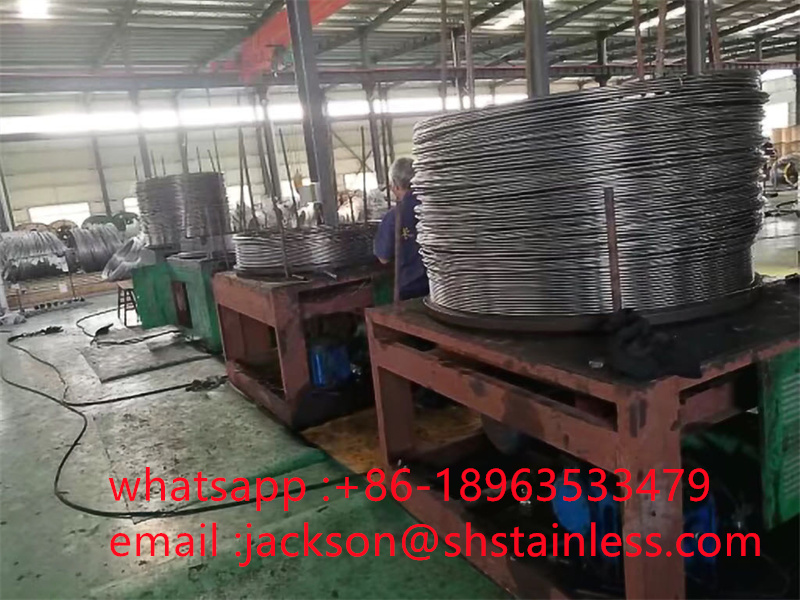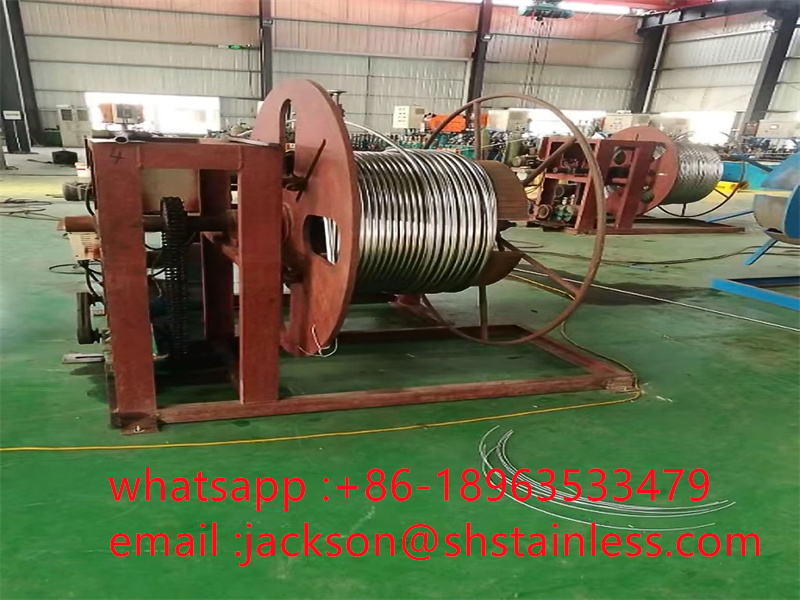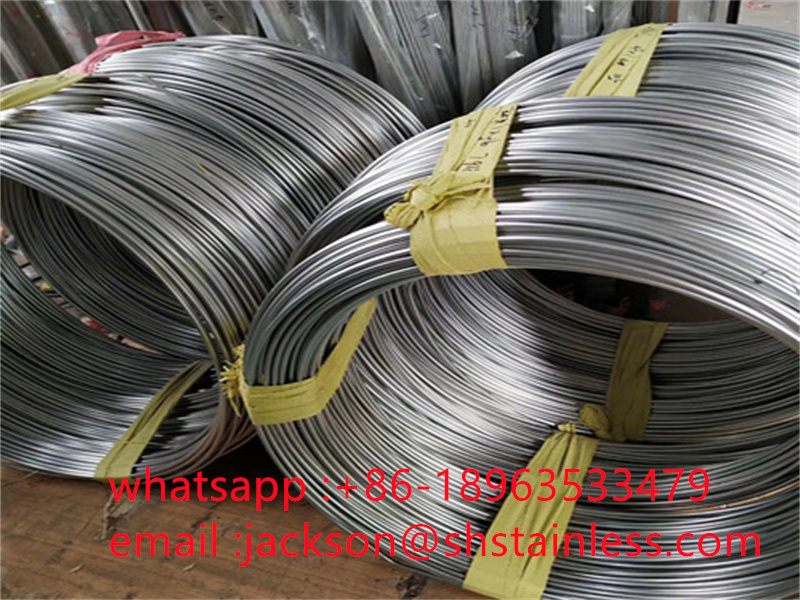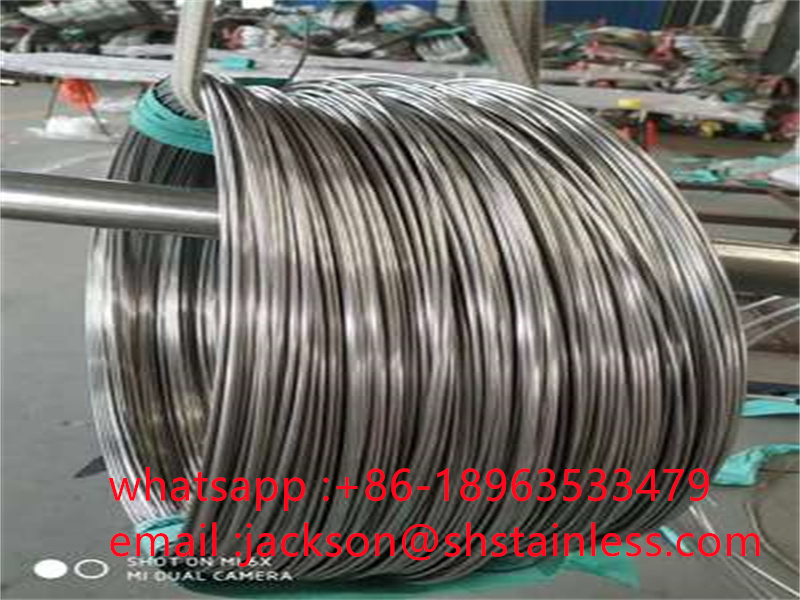Press Release – Island Offshore recently made history when it successfully drilled a pilot well for Centrica Energy through an open water coil. This technology has never been used before in the offshore industry and has proven to be a safer and cheaper alternative to conventional drilling with rigs.
304 316L Stainless steel capillary coil tubing suppliers from china
300 series of stainless steel are used widely, most of them have a strength of corrosion resistance, heat resistance and a good chemical performance.
Specification
| Grade | 301 ,304 ,304L ,316 ,316L ,309 S,310 ,321 |
| Standardl | ASTM A240, JIS G4304, G4305, GB/T 4237, GB/T 8165, BS 1449, DIN17460, DIN 17441 |
| Thickness | 0.2-10.0mm |
| Width | 600mm min |
| Length | 2000mm-8000mm or as customers’ request |
| Surface | NO1,No.4,2B, BA, 6K, 8K, Hair Line with PVC |
Chemical composition
| Grade | C | Si | n | P≤ | S≤ | Cr | Mo | Ni | Other |
| 301 | ≤0.15 | ≤1.00 | ≤2.00 | 0.045 | 0.03 | 16-18 | - | 6.0 | - |
| 304 | ≤0.07 | ≤1.00 | ≤2.00 | 0.035 | 0.03 | 17-19 | - | 8.0 | - |
| 304L | ≤0.075 | ≤1.00 | ≤2.00 | 0.045 | 0.03 | 17-19 | - | 8.0 | |
| 309S | ≤0.08 | ≤1.00 | ≤2.00 | 0.045 | 0.03 | 22-24 | - | 12.0 | - |
| 310 | ≤0.08 | ≤1.5 | ≤2.00 | 0.045 | 0.03 | 24-26 | - | 19.0 | - |
| 316 | ≤0.08 | ≤1.00 | ≤2.00 | 0.045 | 0.03 | 16-18.5 | 2 | 10.0 | - |
| 316L | ≤0.03 | ≤1.00 | ≤2.00 | 0.045 | 0.03 | 16-18 | 2 | 10.0 | - |
| 321 | ≤0.12 | ≤1.00 | ≤2.00 | 0.045 | 0.03 | 17-19 | - | 9.0 | Ti≥5×C |
Mechanical properties
| Grade | YS(Mpa) ≥ | TS (Mpa) ≥ | El (%) ≥ | Hardness(HV) ≤ |
| 301 | 200 | 520 | 40 | 180 |
| 304 | 200 | 520 | 50 | 165-175 |
| 304L | 175 | 480 | 50 | 180 |
| 309S | 200 | 520 | 40 | 180 |
| 310 | 200 | 520 | 40 | 180 |
| 316 | 200 | 520 | 50 | 180 |
| 316L | 200 | 480 | 50 | 180 |
| 321 | 200 | 520 | 40 | 180 |
Our company also has our own advanced testing equipment,which can make physical testing and chemical analysis including spectral analysis,metallographic analysis,ultrasonic testing, hardnesss testing,impact testing, bending testing, tensile testing in room tempreature and high tempreature etc.




Applications:
- Oil & Gas
- Food Service/Restaurant
- Motorsports
- Government/Military
- Pumps & Valves
- Machined Fabricated Components
- Power Distribution
- Fabricators
- Aerospace
- Metal Service Centers
- Nuclear
- Marine/Shipbuilding
- Chemical Processing
MOU Island Constructor was commissioned to drill a shallow pilot well to a depth of 360 m below the shale line in the BUTCH PL 405 field north of Ekofisk to register gas and, if gas is found, plug the pilot well with cement. Pilot wells are drilled to detect shallow gas in the reservoir before the actual production well is drilled. Shallow gases can be described as hidden air pockets occurring at depths close to the surface or crustal line that can lead to blowouts in the early stages of drilling. “Using a rig to drill a pilot well is much more expensive than using a mobile offshore rig such as the Island Constructor. If gas is discovered and the well needs to be plugged, moving the rig to a new location for a possible new pilot well would mean Huge Costs. using a rig are also significant compared to using a vessel, as it takes longer to come off in the event of a blowout,” explains Anders Olsen, project manager at Island Offshore. to stop a potential shallow release of gas when moving to a safe area,” Olson continued.
Without a riser, no offshore riser is used, and the coil maintains tension between the vessel and the subsea supercharger via a second onboard supercharger. The real pipe does not rotate, only the pressurized fluid inside the spool drives a hydraulic motor that rotates the bit. The subsea injector pushes and pulls the coiled tubing in and out of the well. “Since 2009, our goal has been to reach this goal. With coiled tubing, a lot of maintenance can be done to increase production and squeeze more oil and gas out of the well,” said Per Buset, offshore drilling manager on the island. top hole. Today, these operations are performed using the rig’s offshore riser, which can be fed coiled tubing. This is expensive and time consuming. Island Offshore owns and operates three light maintenance vessels in the North Sea. Traditionally these vessels used wire ropes in the well. Today, maintenance can be done with cable technology, but much more can be done with coiled tubing. One example is pumping fluids into a well and performing more serious maintenance work, such as descaling production pipes to return them to their original dimensions.
After a successful year for tenders for floating offshore wind farms, the nascent industry is poised for explosive growth…
Danish manufacturer of geodetic software and equipment for marine and offshore power industry EIVA has launched a cloud-based thin client…
US unmanned surface vehicle (USV) company Saildrone has signed a Memorandum of Understanding (MOU) with Seabed 2030…
EIVA has released a new Remote Controlled Towed Vehicle (ROTV) called the ViperFish. According to the company, “the built-in sensor…
Colette Cohen steps down as CEO of UK technology center Net Zero (NZTC). Myrtle Dawes announced…
Italian energy services company Saipem has installed what it claims is the world’s deepest foundation for an offshore wind turbine…
Marine Technology Reporter is the world’s largest trusted industry publication dedicated to marine energy, underwater defense and academia.
Marine Technology ENews is the largest and most authoritative e-newsletter service in the underwater industry, delivered to your inbox 3 times a week.
Post time: Apr-26-2023
